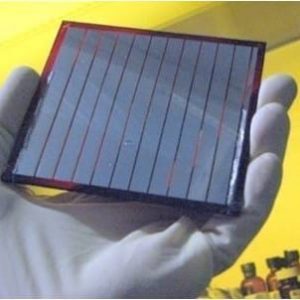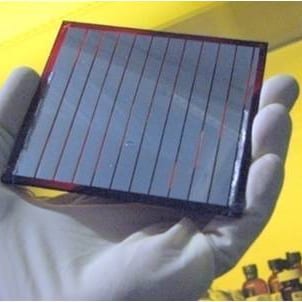
With improving possibilities for the control of material texture on the nanometer scale, nanostructured solar cells have been attracting increasing scientific attention in recent years, in particular, in research on solar cells containing organic semiconductors, where finding the right nano-morphology could be the bottleneck.
What is the ideal morphology of organic and hybrid solar cells? With improving possibilities for the control of material texture on the nanometer scale, nanostructured solar cells have been attracting increasing scientific attention in recent years, in particular, in research on solar cells containing organic semiconductors, where finding the right nano-morphology could be the bottleneck: the efficiencies of these devices still are considerably inferior to those of traditional cells, mainly due to charge carrier recombination. Using materials with a suitable nanostructure could help to optimize the physical properties and improve the performance of such devices. Therefore, Lukas Schmidt-Mende and coworkers from the Ludwig-Maximilians University in Munich, Germany, collected clues to this perfect morphology by having a closer look on the design of nanostructured cells and the resulting device physics.
Despite their yet low efficiencies, the development of organic and hybrid solar cells is a crucial step if photovoltaic panels are to be established as a standard means for energy supply: in respect of the high costs and energy consumption of the silicon production, traditional solar cells are not competitive to other energy sources such as gas or wind energy. Devices featuring organic semiconductors could decrease the production costs remarkably. But how exactly could the nano-morphology of the cells help to increase their efficiency?
In order to avoid charge carrier recombination inside the cell, exciton transportation pathways have to be short and exciton separation has to be facilitated. Transferred to the device architecture, this means: small domains of each donor or acceptor material and large interfacial areas in between them – both of which can be accomplished by controlling the cell design on the nanoscale. The German research group presents different materials and nanostructuring methods for fully organic solar cells, various morphologies for hybrid cells and their working mechanisms, and how the light-trapping properties of nanostructured materials can be used to compensate for the poor light harvesting properties of thin organic semiconductor layers.
Though, what the ideal nano-architecture looks like exactly has still to be discovered. But present research offers various hints about how the nanostructure influences the device performance, and the authors are confident that with improving nanofabrication techniques, organic and hybrid solar cells will be able to compete with traditional cells.

















